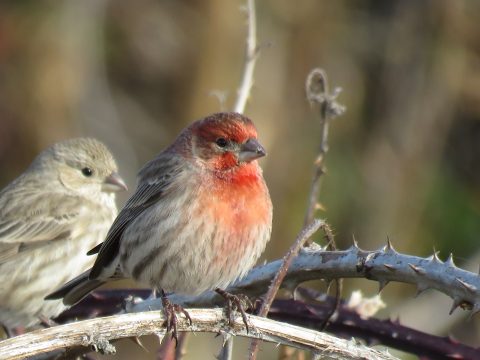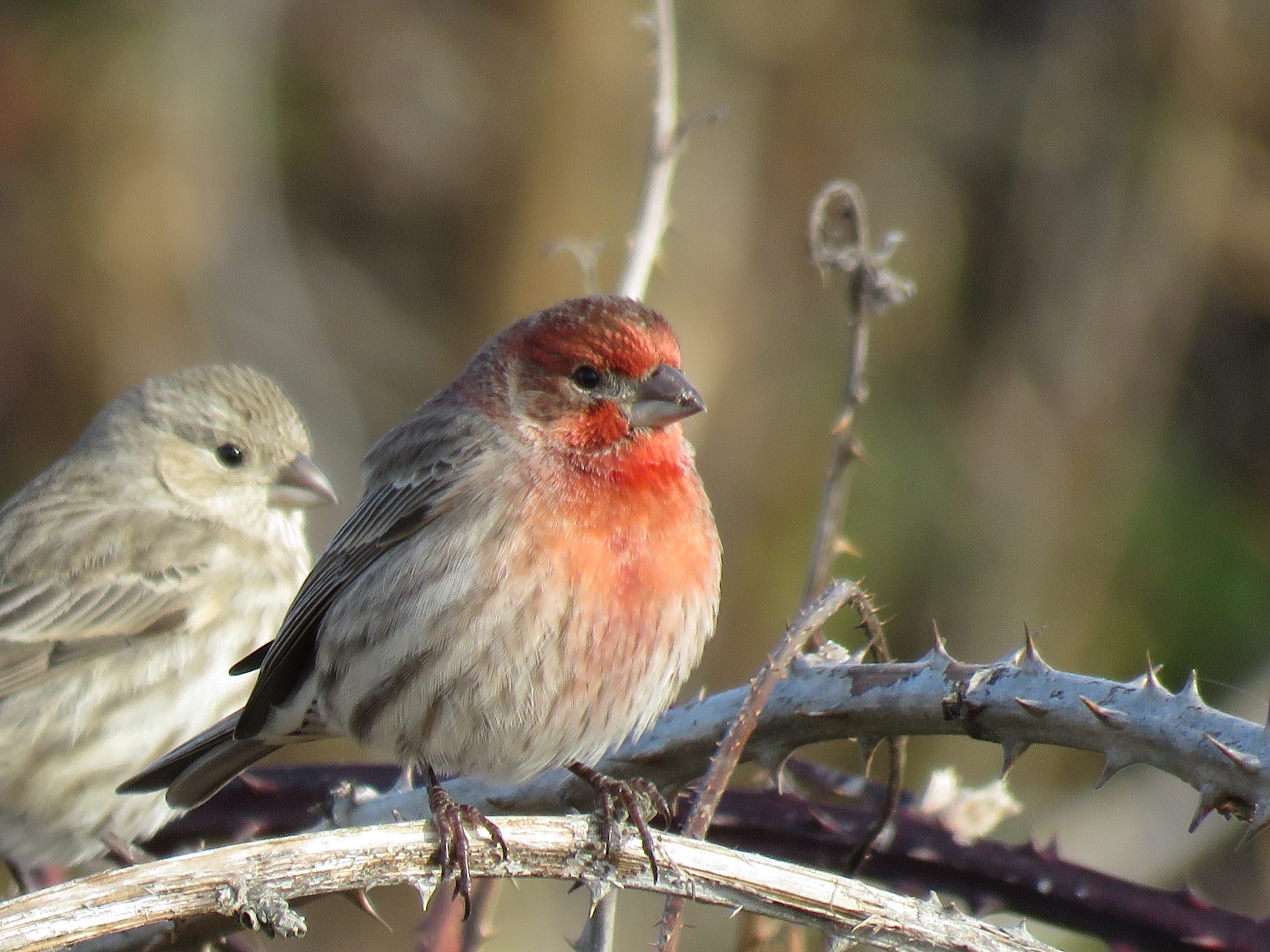Bird of the week: House Finch
About: A brown/gray finch with streaking on the underside. Males have a pinkish-red breast/head.
Where to find this bird: Look for this bird in shrubby areas, such as the SLUG garden, or shrubs around the tennis courts. Frequent feeder visitor.
When to find this bird: Year-round.
Fun fact: Even though they are found across North America, house finches are native only west of the great plains. They were first introduced on Long Island, N.Y. in 1940 after failed attempts to sell them as caged birds.

The Great Backyard Bird Count
Each February, the Great Backyard Bird Count takes place. Participants around the world join together to count birds. Unlike the name suggests, the Great Backyard Bird Count does not only take place in backyards, but at your favorite birding spots. That could be out your dorm window, along your favorite walk, at your backyard bird feeder or your favorite nature reserve.
For me, that will be searching for some winter treats on campus, watching birds at my bird feeder and making a trip to one of the parks around Appleton. It is kind of like a Big Day, which is when birders try to see as many birds as possible in a 24-hour period, except more laid-back since you can participate for as little as 15 minutes over the four-day period during which it takes place and, regardless of how many species you see, your contribution is part of a global community.
Since it takes place in February, even if you go out and bird all day, you won’t see as many species as on a Big Day in May. I’ll consider it a good weekend if I break 25 species. Even with the low numbers, I consider it a good opportunity to search for some winter goodies — I hope to see some wintering ducks, an accipiter and, if I’m lucky, a black-backed gull.
The Great Backyard Bird Count has been a staple for bird conservation since 1998, when it was the first online citizen science program to focus on birds. It is now run by the Cornell Lab of Ornithology, National Audubon Society and Birds Canada and works with other partners around the world. Now it integrates with eBird and the Merlin Bird ID app, which makes participation more accessible than ever.
To participate this year, all you have to do is submit your observations any time between Feb. 16–19, 2024 with the Merlin Bird ID app (which is free!) or eBird (also free!). If you are newer to birding, I recommend using Merlin, as it can also help with identification if you can get a photo or a recording of the bird! It is a great opportunity to check out what birds are coming to your feeder, see what birdlife at your local park is or maybe look for that owl you’ve always wanted to see!
I’m looking forward to getting out for this year’s Great Backyard Bird Count, and I hope you will join me.

